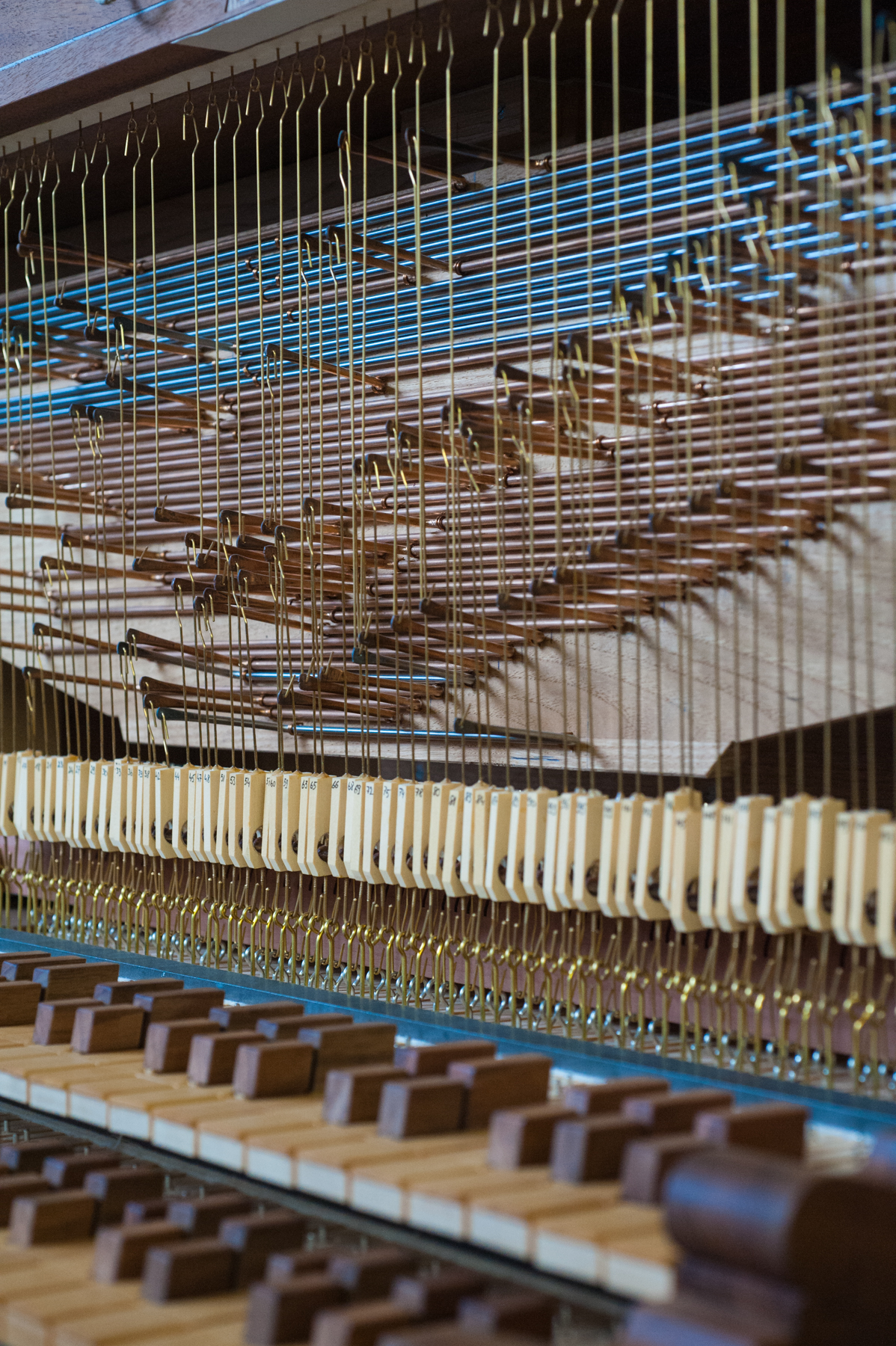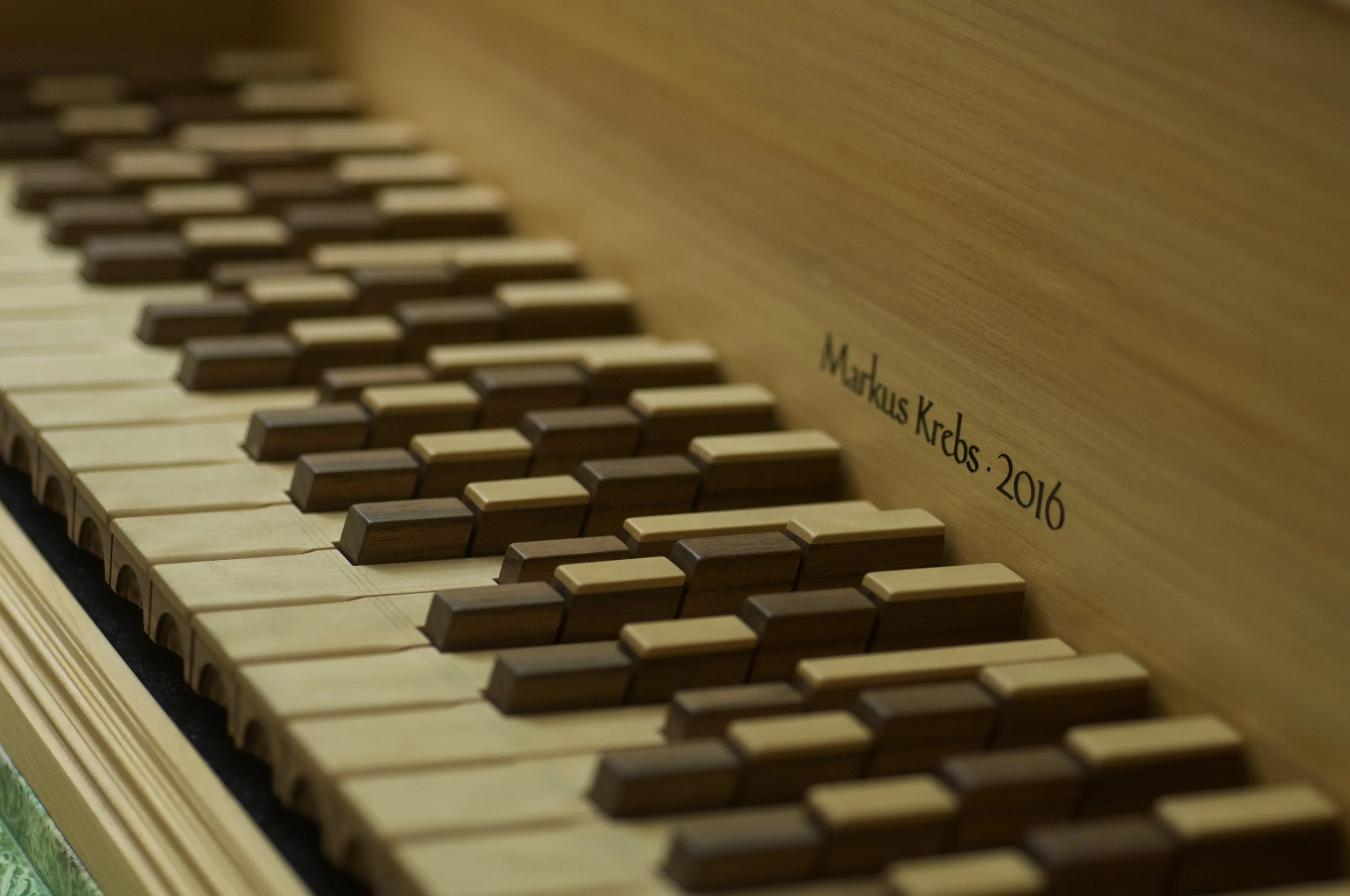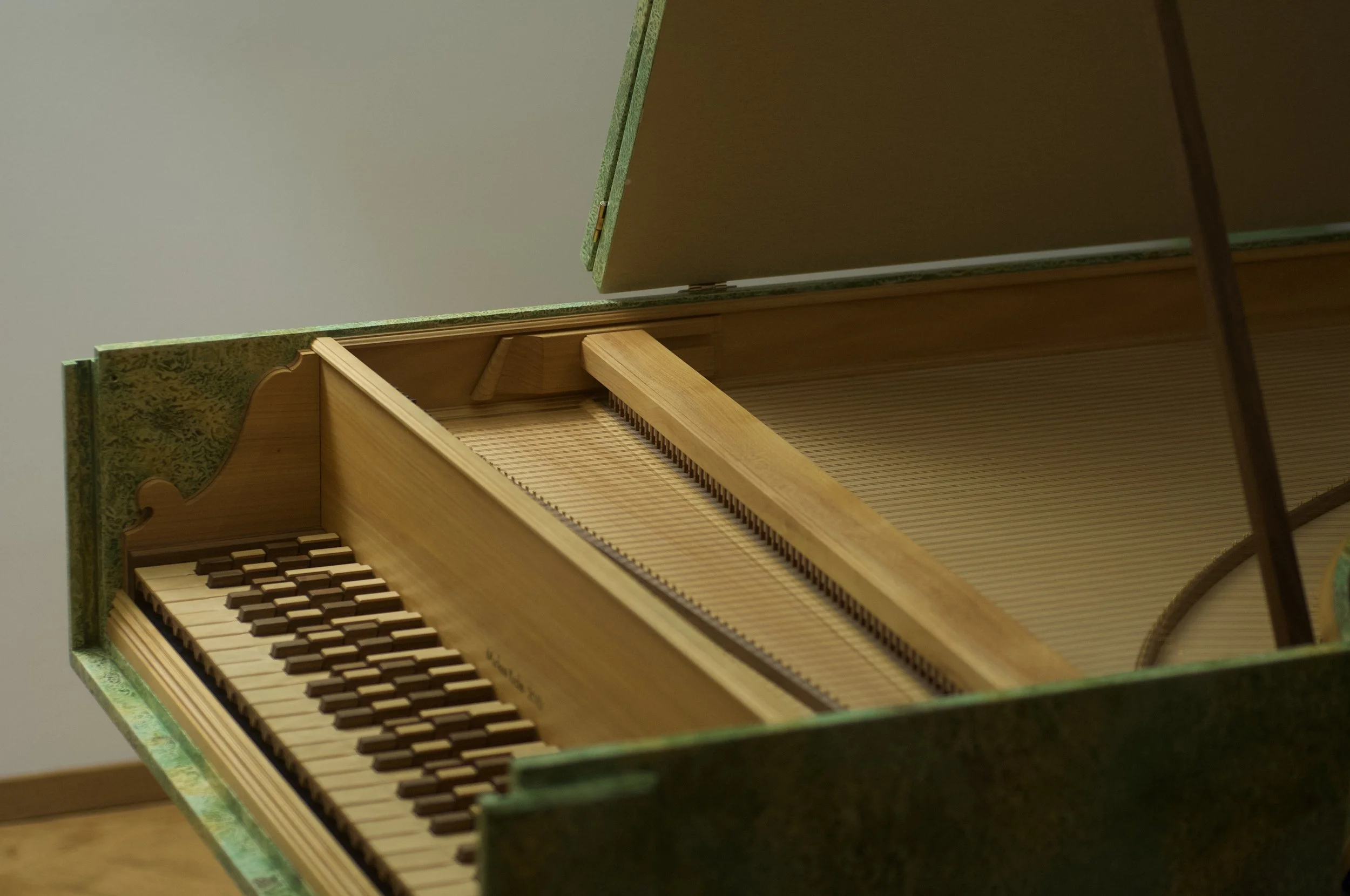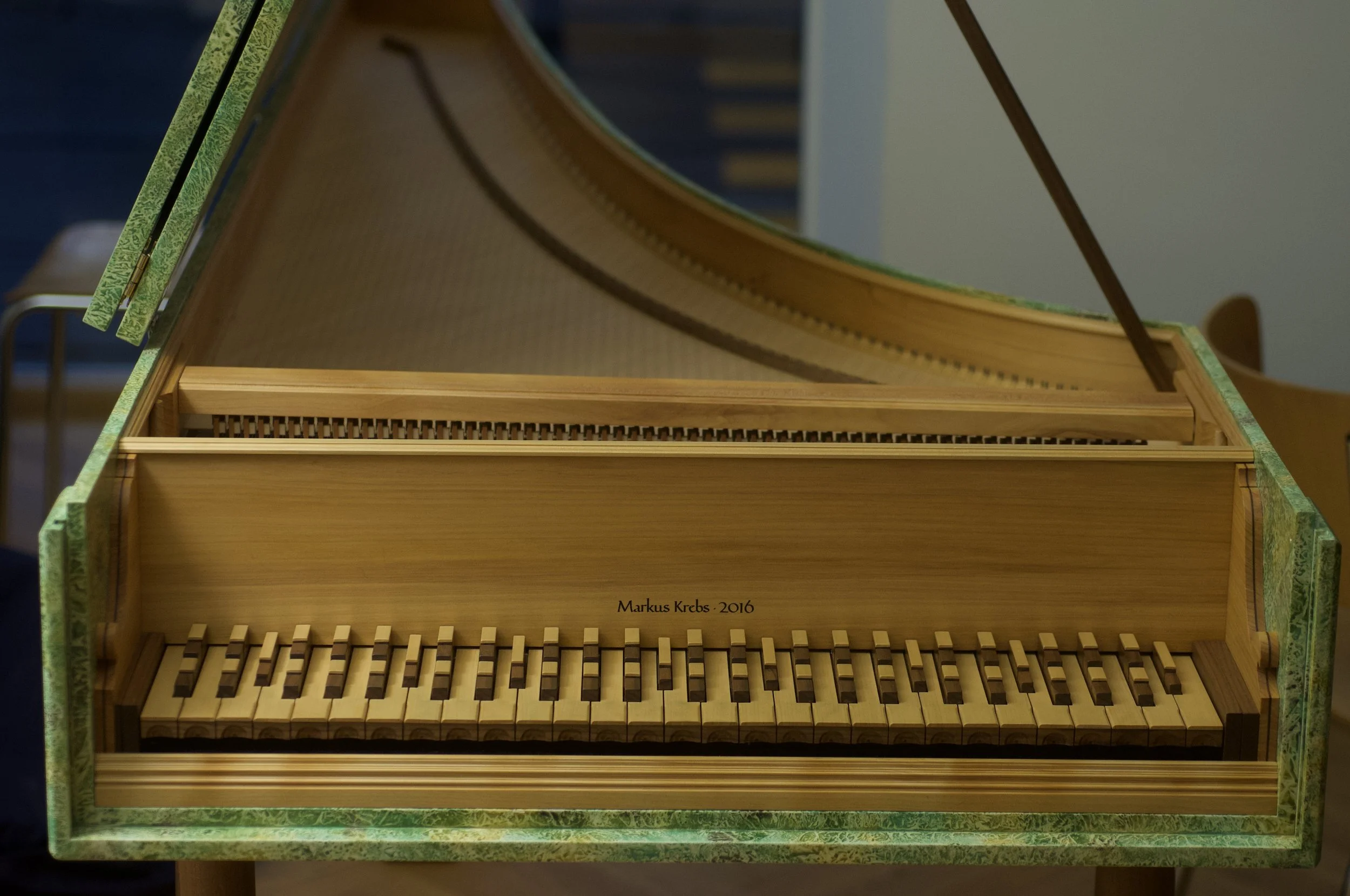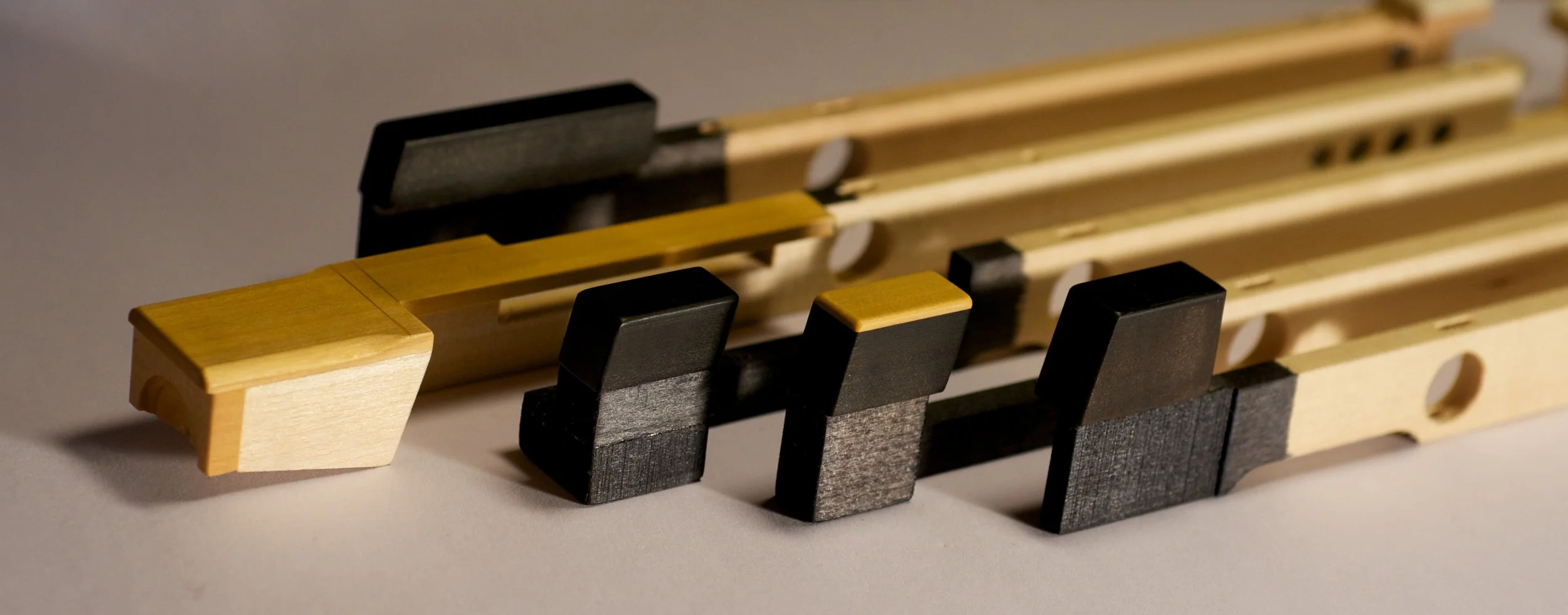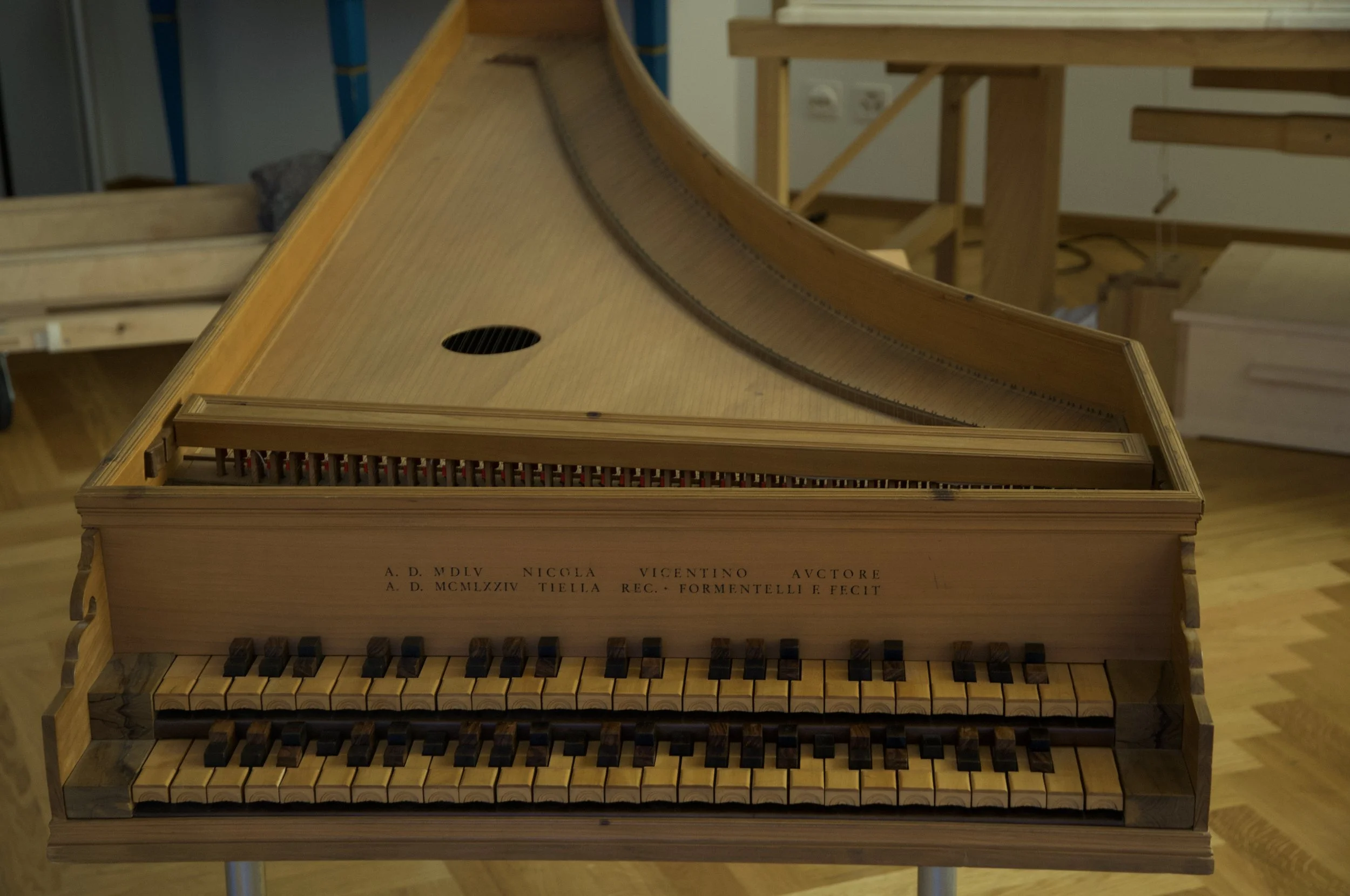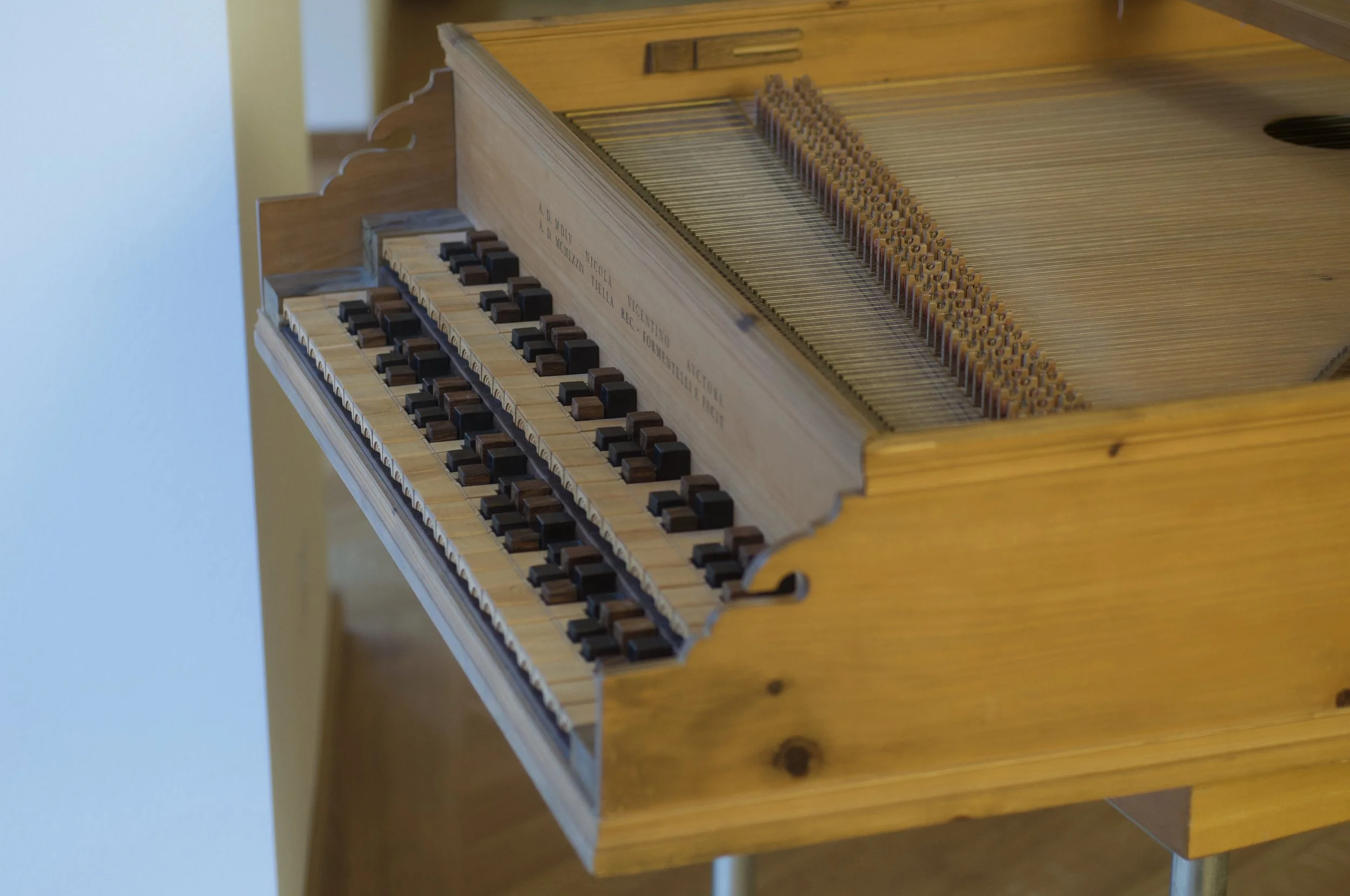The Studio31 Instruments
Arciorgano
Built in 2016 by Fleig Orgel- und Cembalobau in collaboration with Studio31. The instrument is an organo di legno with one open principale stop based on 8'. The construction type of the organ pipes follows the model of the original instrument in the Silberne Kapelle Innsbruck.
The keyboard has 36 keys per octave, organised on two manuals. The lower (white) keys are arranged in a conventional diatonic layout. On both manuals all upper (black) keys are split into two parts. On the lower manual there is an additional key between the notes b and c, and between e and f respectively. The keyboard range of the lower manual is four octaves, C to c''', and on the upper manual F to c'''.
The organ uses a tracker action with brass wire trackers. There are two separate rollerboards, one for each manual. The wind chest is doubled as well, with two rows of valves.
The pipe arrangement is in the shape of a mitre with a facade facing the player. Three rows of pipes are located on the wind chest, a fourth one at the back of the instrument on the level of the keyboard and a fifth one for the bass pipes on floor level. All pipes are made of yellow cedar (Canada), the case is made of French chestnut (North Italy). The pipes are cut to length, without tuning devices such as sliders or flaps. The reference pitch is g'=440 Hz (19°C), which equals a'=492 Hz (19°C). The tuning remains stable between temperatures of 17°C and 29°C, while the reference pitch moves according to the temperature changes.
For the wind supply there are two manually operated bellows at the side of the instrument. Alternatively they can be powered by an electric fan. The windpressure is 50mm water column.
The bellows and the row with the bass pipes can be dismantled and transported separately. The organ case can be split into two parts, both portable by two or four persons. Dismantling and installing the organ takes roughly 30 minutes. The tuning is usually immediately stable and the instrument can be used directly after transportation.
The tuning system follows Vicentino's second description of 1555: the lower manual is tuned in quarter-comma meantone with a chain of fifth starting with g flat and ending with b sharp. The upper manual is tuned in quarter-comma meantone as well, with a chain of fifth from g flat to a sharp. Relatively to the lower manual, the upper manual is transposed upwards by a quarter syntonic comma.
Clavemusicum omnitonum
Built in 2016 by Krebs Cembalobau in collaboration with Studio31. The harpsichord is based on an original instrument by Vito Trasuntino, 1606, currently located at museo Internazionale e biblioteca della musica di Bologna.
The instrument is built according to the Italian building tradition. There is one 8'-stop with two rows of jacks. 31 keys per octave, arranged in one single manual. The lower (white) keys are arranged in a conventional diatonic layout. All upper (black) keys are split into four parts. There are two additional keys with two parts each between b and c and between e and f respectively. The keyboard has a range of four octaves, C to c'''.
All strings are made of brass. The casing is of the false inner-outer type made of poplar. The soundboard is made of spruce.
The keyboard can be shifted sideways to make three different reference pitches immediately available. The three positions result in pitches for the key a' of 440Hz, 461Hz and 484Hz. By retuning, the reference pitch can be adjusted up to 490Hz. Usually, the instrument is tuned in 31edo (equal division of the octave in 31 parts). This system is consistent for all keyboard positions, therefore no retuning is necessary. Other tuning systems are easily applicable.
The instrument is easily portable, like a conventional harpsichord. The tuning stability is remarkable, the tuning process takes less than 20 minutes for an experienced tuner.
Cimbalo cromatico
Built in 2003 by Tony Chinnery, based on an original instrument by Carlo Grimaldi, 1697, currently located at the Germanisches Nationalmuseum Nürnberg. 2007, Markus Krebs developed a 24-keys-per-octave-keyboard for this instrument in collaboration with Johannes Keller. The conventional and the extended keyboard can easily be exchanged.
With the enharmonic keyboard installed, the instrument has only one 8'-register, using both rows of jacks. The 24 keys per octave are organised in one single manual. The lower (white) keys are arranged in a conventional diatonic layout. All upper (black) keys are split into three parts. There is an additional key between b and c and between e and f respectively. The keyboard has a range for four and a half octaves, GG to d'''.
The true inner-outer case is made of Italian cypress, the soundboard is made of spruce. All strings are made of brass.
The instrument usually uses a subset of 31edo, in most cases an equivalent of a meantone chain of fifths ranging from g flat to a double sharp. Other tuning systems are easily applicable, as long as the strings are not strained too much.
Archicembalo
Built in 1974 by the Formentelli workshop in collaboration with Marco Tiella. Strictly based on the descriptions found in book V of Nicola Vicentinos treatise L'antica musica ridotta alla prattica moderna (Rome 1555). The instrument was restored in 2016 by Fleig Orgelbau in collaboration with Studio31.
The instrument is iron strung and has three rows of jacks for one 8'-register with 36 keys / jacks / strings per octave. The reference pitch for a' is usually around 390 Hz. The keyboard has a range from F to c''', with an additional bass key. The bass octave can be tuned like a broken short octave or chromatically. The case and soundboard are made of cypress wood.
The keyboard layout is the same as the one for the Arciorgano, but with slightly different dimensions, leading to different ergonomics. The lower manual accommodates 19 keys per octave (with conventional diatonic white keys) by splitting all black keys into two parts and by adding a key between b and c and between e and f. The upper manual shares the same layout except the two additional keys between b and c and between e and f. The tuning is flexible and can freely be adapted, within the possibilities of the strings.
We appreciate Marco Tiella's generosity for lending his Archicembalo to be used for research and performances at Studio31.


